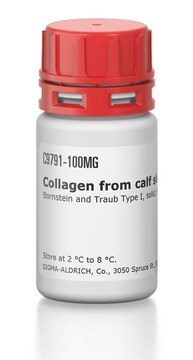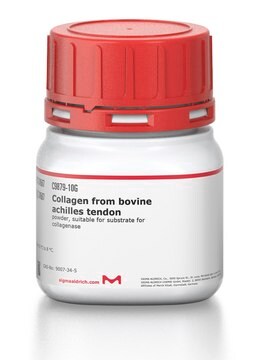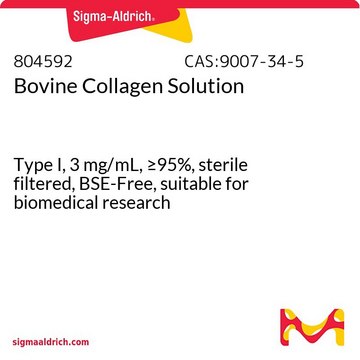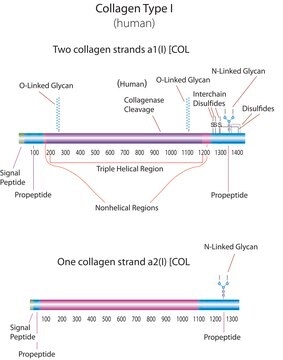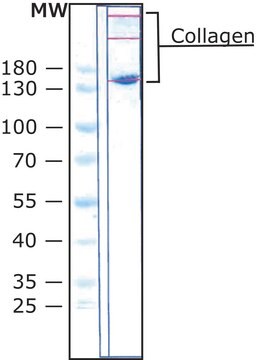C4243
Bovine Collagen Type I
from bovine skin, liquid, 2.9-3.2 mg/mL, ≥99.9% (SDS-PAGE), suitable for cell culture, used for 3D gel formation
Sinónimos:
Bovine collagen solution, Collagen extract
About This Item
Productos recomendados
product name
Collagen solution from bovine skin, Type I, 2.9-3.2 mg/mL, suitable for cell culture, sterile-filtered
biological source
bovine skin
Quality Level
sterility
sterile-filtered
product line
BioReagent
assay
≥99.9% (SDS-PAGE)
form
liquid
packaging
pkg of 100 mL
pkg of 20 mL
concentration
2.9-3.2 mg/mL
technique(s)
cell culture | mammalian: suitable (and for 3D matrix formation)
surface coverage
6‑10 μg/cm2
suitability
gelation test tested
UniProt accession no.
binding specificity
Peptide Source: Fibrinogen
foreign activity
endotoxin ≤1.0 μmole/min-mg protein
shipped in
wet ice
storage temp.
2-8°C
Gene Information
human ... COL1A1(282187)
¿Está buscando productos similares? Visita Guía de comparación de productos
General description
Application
- in the preparation of collagen gels.
- to coat cell culture dishes for HeLa cell line culture.
- to construct hydrogels laden for HepG2 cell culture.
Biochem/physiol Actions
Components
Caution
Preparation Note
Other Notes
Related product
Storage Class
12 - Non Combustible Liquids
wgk_germany
nwg
flash_point_f
Not applicable
flash_point_c
Not applicable
ppe
Eyeshields, Gloves, multi-purpose combination respirator cartridge (US)
Certificados de análisis (COA)
Busque Certificados de análisis (COA) introduciendo el número de lote del producto. Los números de lote se encuentran en la etiqueta del producto después de las palabras «Lot» o «Batch»
¿Ya tiene este producto?
Encuentre la documentación para los productos que ha comprado recientemente en la Biblioteca de documentos.
Los clientes también vieron
Artículos
Extracellular matrix proteins such as laminin, collagen, and fibronectin can be used as cell attachment substrates in cell culture.
Nuestro equipo de científicos tiene experiencia en todas las áreas de investigación: Ciencias de la vida, Ciencia de los materiales, Síntesis química, Cromatografía, Analítica y muchas otras.
Póngase en contacto con el Servicio técnico

